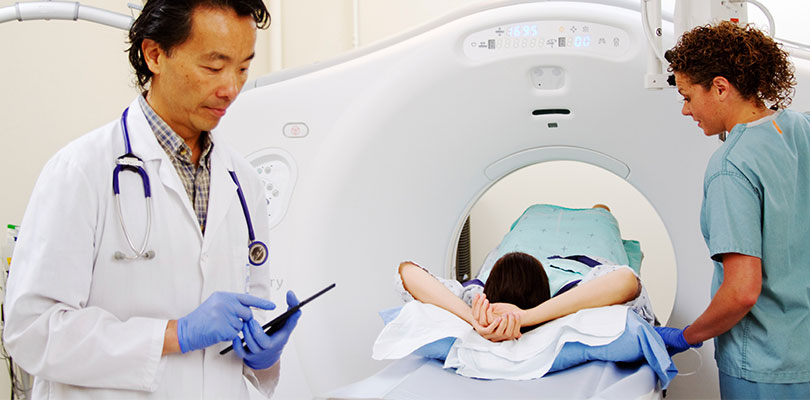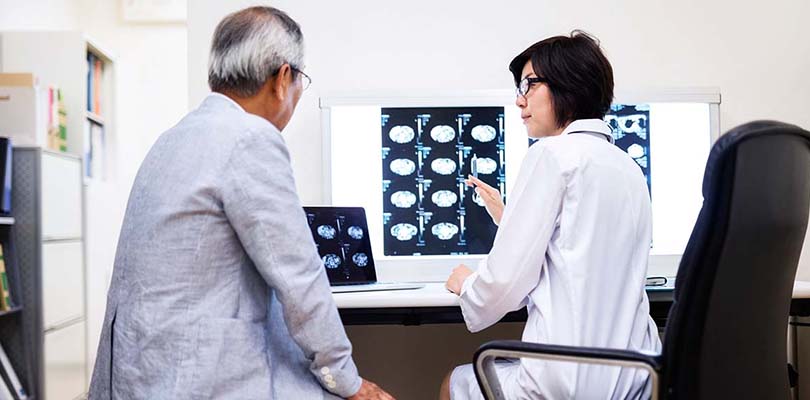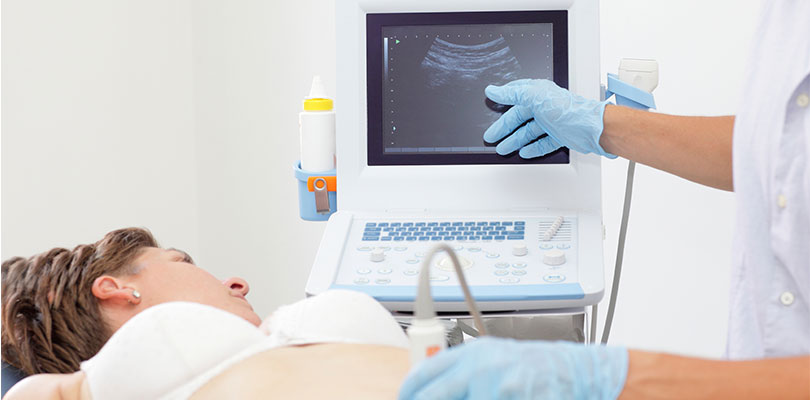Photo Credit: Trish233 / iStockPhoto.com
What Is Radiation Therapy and Why Is It Used?
Radiotherapy, or radiation therapy, involves using radiation to destroy cancer cells or halt their growth. About half of all cancer patients in the United States receive radiotherapy as part of their cancer treatment.
Radiation therapy is used in multiple ways:
- It may be aimed at curing the cancer or for palliative care.
- It may be used to shrink a tumor prior to surgery.
- It might be used following surgery to kill any remaining cancer cells and to help prevent the cancer from coming back.
- Radiotherapy may also be used prophylactically to stop a cancer from emerging somewhere else in the body.
- Even if a cancer has spread beyond cure, radiation therapy may be used to shrink tumors to reduce symptoms.
What Is Radiation Therapy?
Radiotherapy uses ionizing radiation. This includes photon radiation (X-rays, gamma rays) and particle radiation (electrons, protons, neutrons).
The different types of radiation have different energy levels, affecting how deep the radiation beam can penetrate into tissues. High-energy photon beams, as used in X-rays, are most commonly used.
They pass through the body, through the cancer, and pass out the other side, affecting all cells in their path. Particle radiation has less energy and doesn’t travel very far. Electron particle radiation, for example, is used to treat skin cancers and tumors near the skin.
Radiotherapy works by causing damage to the DNA inside cells, which contain our genes. Genes are required to produce the proteins needed for proper cell functioning. Damage to these genes means cells cannot produce all the proteins they need to function properly and grow.
Normal cells have mechanisms to repair damaged DNA. These repair mechanisms are necessary because minor damage to DNA occurs all the time in normal day-to-day functioning. Radiation therapy, however, causes significant damage to DNA.
The higher the dose of radiation given and the longer and more times cells are exposed to the radiation, the greater the damage inflicted. Too much damage becomes difficult to repair and impairs the growth and function of any cells affected, both normal and cancer cells.
While radiation damage to DNA affects cell function and slows growth, death of the cell does not usually occur until the cell tries to replicate. To replicate, a cell must produce a duplicate copy of its DNA for the new cell.
When it comes to radiation vs chemo, they're both effective methods for treating cancer, but sometimes one is better than the other. Learn more here.
If the DNA being copied is too damaged or if the cell can’t produce all the proteins needed to replicate, then it dies during the process of replication. For this reason, those cells that are actively in the process of replicating are more vulnerable to the effects of radiation and are killed sooner. Those cells that are not actively replicating may not die straight away but may die later, when they do try to replicate.
Both normal cells and cancer cells are affected by the effects of radiation. Radiation therapy works to harm and kill cancer cells while trying to spare normal cells as much as possible.
Radiation and Cancer Cells
Radiation therapy is possible because of two key properties of cancer cells. Firstly, cancer cells often have faulty DNA repair mechanisms; it is these faulty repair mechanisms that allow cancers to form and survive in the first place.
After radiation therapy, normal resting cells may have a chance to repair themselves, however, cancer cells often cannot. This makes them more vulnerable to the effects of radiation.
The other property of cancer cells that makes radiation therapy possible is rapid replication. Cancer is caused when cells start to replicate uncontrollably, ignoring the body’s messages to stop.
Cancer cells tend to replicate more rapidly than normal cells. This means they die more rapidly from the effects of radiation therapy, and often before they have had a chance to try to repair themselves.
Different types of cancers have different vulnerabilities to radiation therapy. It is thought that radiation therapy tends not to work as well against melanomas because they maintain better DNA repair mechanisms. Cancers that grow more slowly are also less susceptible to radiotherapy.
Unfortunately, radiotherapy does cause damage to normal cells and this causes unwanted side effects. The cells most affected are those that replicate more rapidly. These include skin, hair, blood and reproductive cells, and the cells lining the mouth, stomach and intestines.
Understanding the Treatment
Radiation therapy causes less damage to normal cells if it is targeted more precisely at the cancer and if it is delivered in smaller doses and with periods of recovery between treatments. The problem is that radiotherapy is more effective at killing cancer cells if higher doses are given over a rapid timeframe.
Most people who receive radiation therapy lie under an apparatus much like an X-ray machine. A radiation beam is directed through the body at the level where the cancer is.
The beam goes through one side of the body and out the other side, affecting all normal cells as well as cancer cells in the line of the beam. Sometimes, however, radiation is delivered by an internal probe or during surgery, directly at the cancer, causing less damage to surrounding tissues.
This means a higher dose of radiation can be given. Fortunately, over time technology is becoming more sophisticated, developing methods to deliver radiation to cancer cells whilst sparing as many normal cells as possible.
A compromise is reached between the radiation dose given and the timeframe of the therapy. Radiation therapy is often given over a course of five days, with breaks between treatments. The DNA damage caused by radiation is caused by direct damage from the radiation but also due to the production of harmful “free radicals” that form from oxygen and water in cells.
During radiation therapy, tissues become dehydrated and low in oxygen. Spacing treatments a day apart enables the cancer to rehydrate and fill with oxygen, which will make the cells more vulnerable again. Taking a break after five days gives normal cells a chance to recover.
Radiotherapy may be used in combination with chemotherapy. Many traditional chemotherapy drugs prevent cancer cells from replicating by joining to and altering the DNA. This makes the DNA more vulnerable.
If chemotherapy is given prior to radiotherapy, it can make the cells more sensitive to the radiotherapy. The downside is patients may experience the combined side effects of both chemotherapy and radiotherapy.
Radiotherapy is a complex therapy, requiring careful planning and timing. Multiple specialists will usually be involved. They need to decide how radiotherapy best fits with surgery and chemotherapy, as well as the timing, the dose, and the best radiotherapy method to use.







